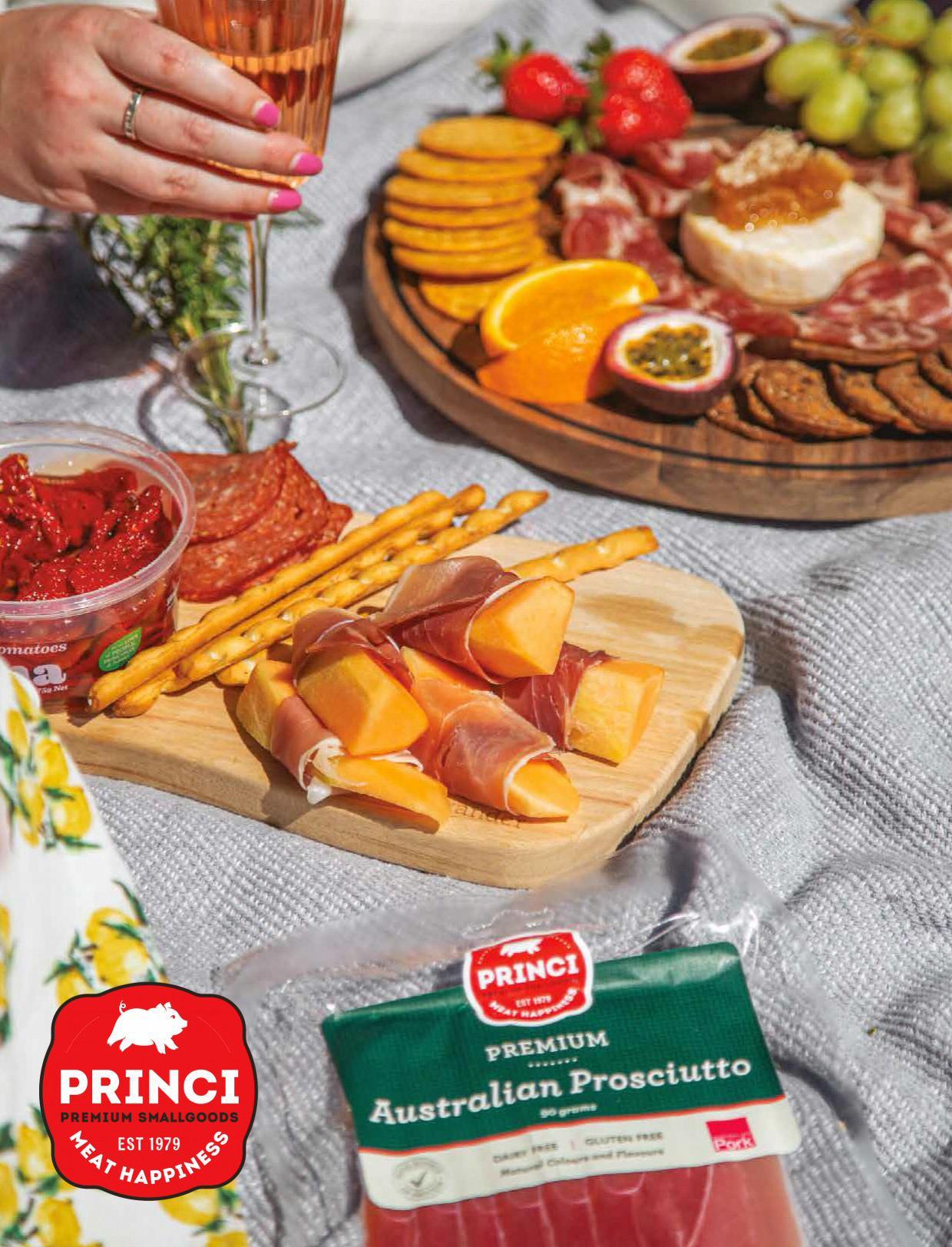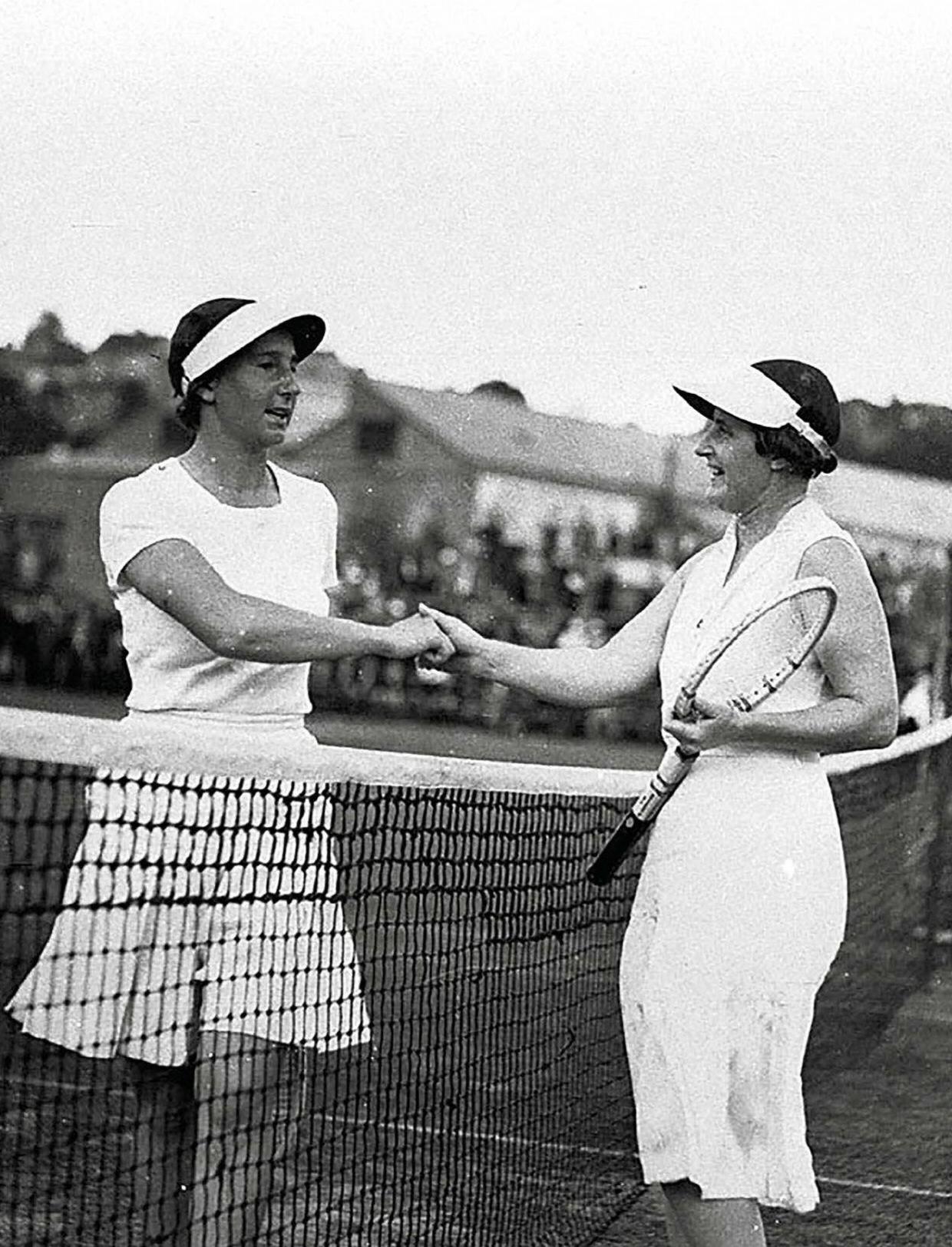
9 minute read
Game, set, match
– Margaret Molesworth
Advertisement
The first Australian women’s champion Margaret Molesworth (right) with Dorothy Round, the first international player to win the event in 1935. Opposite: World number one Ashleigh Barty in action.
GAME,
SET &
WORDS by BRONWYN P PS
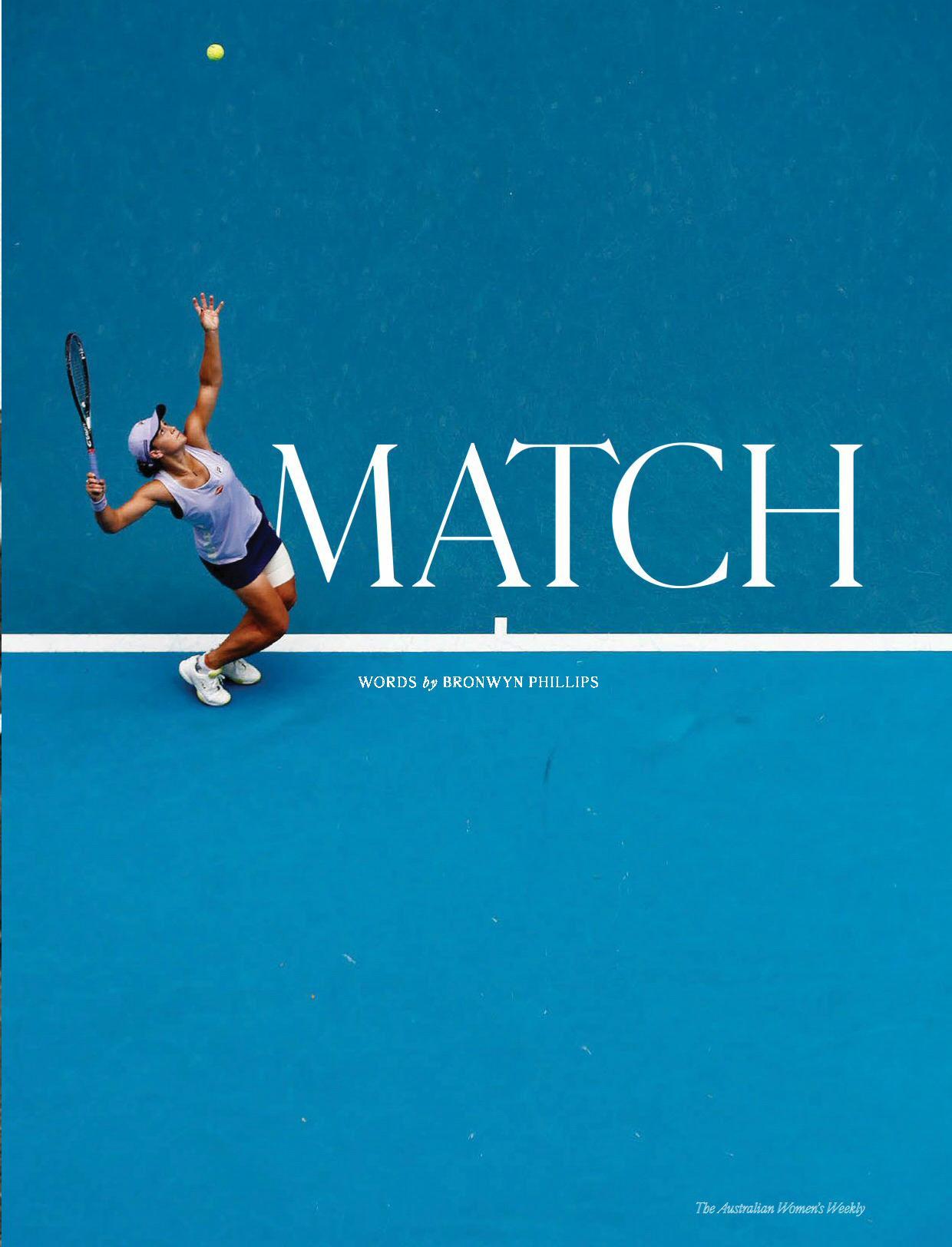
In 1922, the Australian Open hosted its first women’s championship. It was the beginning of an epic contest that would take women from the back courts to the Grand Slam, and pave the way for the superstars of modern tennis.
She could hit the ball as hard as any man, with a penetrating serve and a backhand so powerful it made her male doubles opponents tremble. When Margaret “Mall” Molesworth stepped onto the back court at White City Tennis Club in Sydney in December 1922, tennis history was made. Despite the restrictive dress code – fulllength skirt, long-sleeved blouse, stockings, shoes and hat – Mall demolished Esna shunted to the back courts, into an unmissable Grand Slam watched by millions. This year, hopes are high that
Whatever the result, it was Margaret and her fellow tennis pioneers who paved the way, not only for a Trailblazers in white stockings
citizens.” – PamStockley, daughter of Nancye Wynne Bolton
Margaret said in the 1980s.“The men were the star attractions.”
Already a married woman when she first won at 27, Margaret would compete in 10 Australian Championships and win two. In an era when women retired after marriage and having children, Margaret bowed out at the 1935 titles aged 40. She was the first Australian woman ranked internationally in the top 10 and later became the country’s first female professional tennis coach. She died, aged 90, in 1985 – and in 2022 she’ll be inducted into the Australian Tennis Hall of Fame.
Besides Margaret, the dominant tennis champion of the 1920s was Daphne Akhurst, in whose memory the women’s Australian Open trophy is named. Known as Australia’s “tennis sweetheart”, Daphne won the Australian Championships five times and, along with Olympic swimmer Fanny Durack, was one of the bestloved sporting champions of the 1920s.
With sleek black hair, sleeveless dress and red bandeau, Daphne epitomised changing times and greater freedom for women. She toured overseas in 1925 and 1928, reached the French quarterfinals and Wimbledon semifinals, and was ranked world number three. She wrote about her travels and matches for the Sydney newspapers. “Every description refers to her as a charming sporting figure,” Richard B. Naughton wrote in Daphne Akhurst: The Woman behind the Trophy. Daphne was “one of Australia’s first sporting stars”. Tragically, she died at 29 after an ectopic pregnancy, leaving behind a young son and plunging Australian tennis into mourning.
In her honour, the Daphne Akhurst Memorial Cup was first awarded in 1934. Like Daphne, the winner, Joan Hartigan, was a stylish presence, in her visor and pleated dress. Joan won three more times and was a Wimbledon semifinalist twice.
Melburnian Nancye Wynne Bolton was the next standout champion, clinching six singles titles between 1937 and 1951. If competition hadn’t been suspended during WWII, there’s no telling how many she’d have won.
When she won the Australian title in 1946, Nancye did so despite having lost both her parents a few years earlier and also her husband, tragically killed during the war while she was pregnant. “She never got over the death of my father,” her daughter, Pam Stockley, tells The Weekly. He’d promised he’d come back to her, and for the rest of her life she listened for his footsteps on the street.
Even so, says Pam, “Nancye was a determined, independent woman, and could do anything she turned her mind to”, from running up curtains to lobbying tennis administrators to let female players tour. “She was not of her era.”
Nancye was ranked world number four and was the first Australian woman to contest a major final abroad – the 1938 US Championship. It had been a battle to get there. The Lawn Tennis Association of Australasia (LTAA) had turned down multiple American requests to send a women’s team, giving in only after international associations agreed to foot the bill.
“The female players were treated like second-class citizens,” Pam remembers. “But Nancye was not your
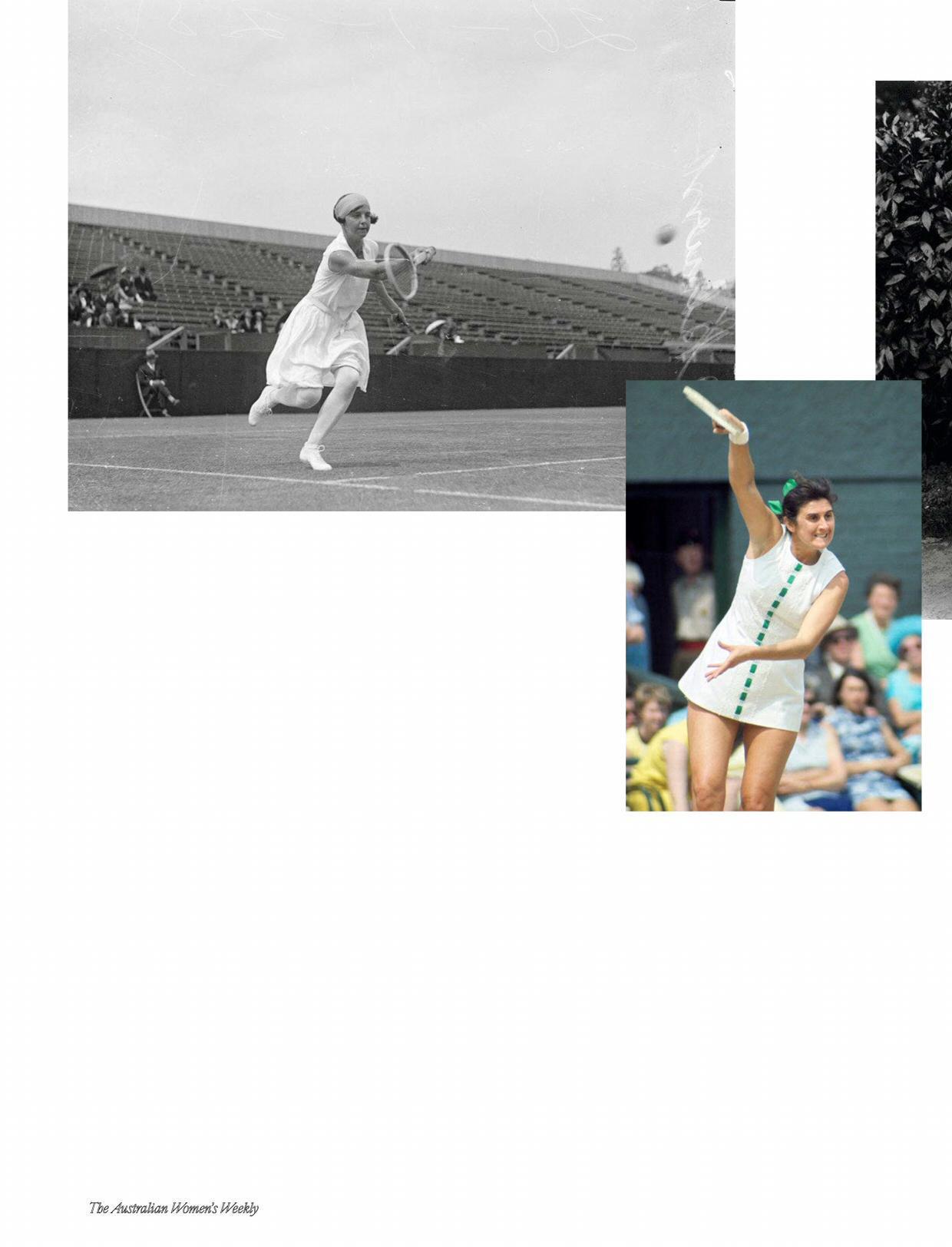
shrinking violet and she would have stood up for herself and said a few words. She thought she was as good as a man and should be treated equally.” Battle for centre court
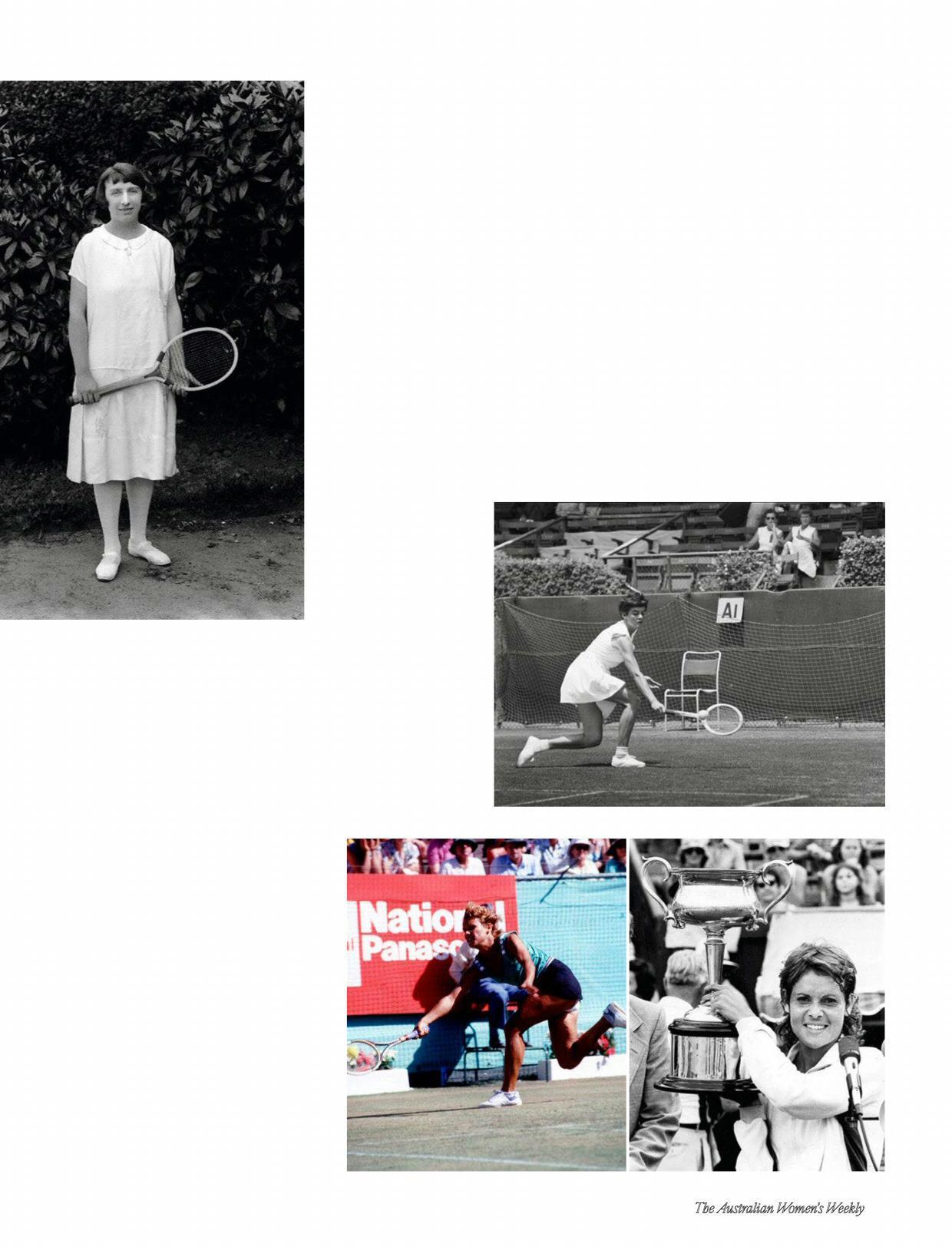
Almost two decades later, in 1956, female players were still being treated shabbily. Fed up when their Australian Open semifinal was moved to a back court as the men’s games on centre court were dragging on, Aussies Mary Carter and Daphne Seeney refused to play. Dubbed “Little Miss Poker Face” by the press for her serious game face, Mary took on the head of Queensland tennis and refused to back down. Other semifinals had been played on centre court, she insisted, so it was only fair they should have the same opportunity.
“We decided to sit in the dressing room and wait until the men finished,” Mary recalled. “Eventually we got our way.” The next day, on centre court, 21-year-old Mary took out the first of her two Australian Open titles.
Four years later, 17-year-old Margaret Smith (later Margaret Court) played her final on centre court, but only because she’d taken down the Wimbledon champion, Maria Bueno, in the quarterfinals.“Bueno’s matches were always on centre court because she was the Wimbledon champion, but not the Aussie girls,” Margaret recalled later.“It was all the men’s matches – the women weren’t even recognised.” Margaret went on to win an unrivalled 64 major titles, and was 11 times Australian champion.
Rod Laver also won his first Australian title in 1960. In those pre-prize money days, “Rocket Rod” received a silver tea set; Margaret was given an umbrella.
Even the legendary Evonne Goolagong Cawley, queen of Kooyong with four titles to her name, took a swipe at tournament organisers before her finals win in 1977. “I’m no women’s libber,” she said, “but I feel it’s common sense that the women should be given a better go.”
Clockwise from top: Esna Boyd was a seven-time Australian Championships finalist; Mary Carter, who took a stand in 1956; Evonne Goolagong Cawley in 1977 and 1982. Opposite page: Daphne Akhurst (top) in 1928 and Judy (Tegart) Dalton in 1968.
A long way, baby “Even when I played Billie Jean King at Wimbledon in 1968,I didn’t get any prize money, only expenses,” Judy (Tegart) Dalton tells The Weekly. Now 84, the former Grand Slam finalist and doubles champion recalls wandering Paris with fellow player Lesley Turner days before the 1966 French Open, looking for a hotel after their accommodation fell through.
“Lesley was the dual French champion, and the Australian LTA did nothing to help us,” says Judy. “That would never have happened to the men.”
The final straw came in 1970 when promoter Jack Kramer announced the Pacific Southwest Open would pay the men’s champion $12,500, the women’s just $1500. Fed up, nine female players,
led by Billie Jean, formed their own tour. “We set out to change things,” says Australian Kerry Melville Reid.
Dubbed the ‘Original 9’, the group, including Kerry and Judy, competed on the newly-created Virginia Slims Circuit, the basis for the Women’s Tennis Association Tour. The US LTA threatened to ban them from Grand Slam and international competitions. In Australia, the ban on Kerry and Judy extended to equipment and venues. “We suffered more than the American players,” Judy tells The Weekly.
Judy was runner-up in the first Virginia Slims event and won her largest prize, around $2600, which helped pay off her Melbourne home. The Australian and US Tennis Associations ended their suspensions and Kerry won the 1977 Australian Open in front of a raucous crowd.
Tired of playing on back courts at the Australian Open and a 32-player draw (half that of the men), the women staged standalone events in 1980-82. They attracted a new sponsor and a 400 per cent hike in prize money.
In the 1981 final, Martina Navratilova had her first win over Chris Evert. Their rematch a year later completely outclassed the men’s event which, without any top seeds and played in the rain, was a soggy shambles. Tennis writer Alan Trengove branded it “the tournament that drowned in shame”.
In 1983, the men and women reunited. The women, often treated as an
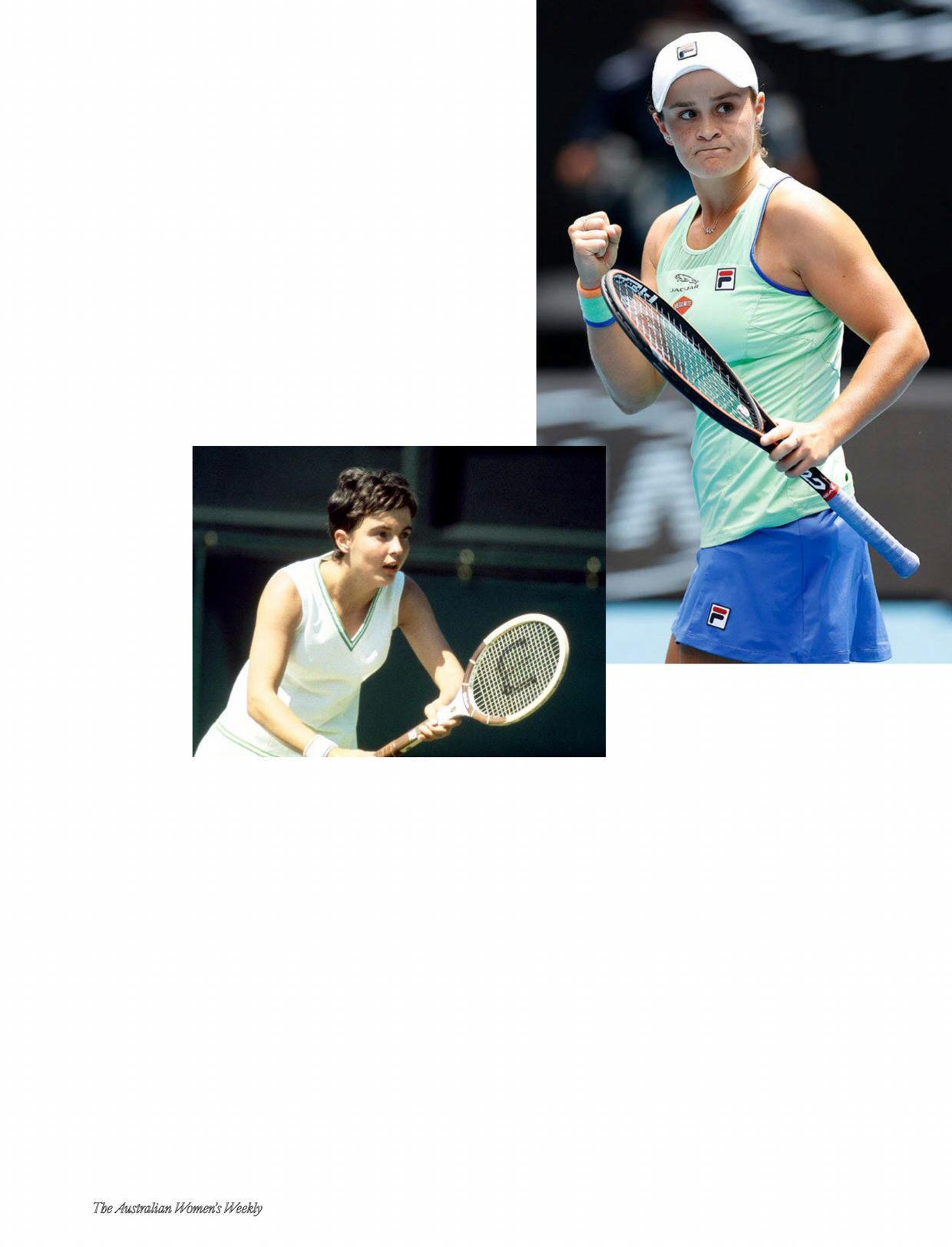
Right: Borne on the shoulders of the incredible women who went before her, world number one Ashleigh Barty takes the hopes of a nation into the Australian Open. Below: Kerry Melville Reid reached number five in the world rankings 50 years ago.
afterthought, had sparked a revival of the Australian Open. The first $1 million purse in Australian sport was on offer, and the big names were back. Crowds flocked to Kooyong. In 1984, the Australian Open introduced equal prize money, and four years later, women opened the centre court program for day and night sessions for the first time.
Today, the Original 9’s dream that women could make a living from competitive sport has become a reality, and women tennis players are some of the highest-paid athletes in the world. Their efforts have also inspired women in other sports, including surfing and cricket, to take control of their careers. “We achieved recognition for women’s tennis and women’s sport as a whole,” says Judy Dalton.“We didn’t realise how significant it would be 50 years on.”
Come January, Judy will attend Margaret Molesworth’s Hall of Fame induction as a VIP and will be courtside for all the action. In Ashleigh Barty, Judy says, tennis has found a champion for challenging times. “Ash has done it,” she says. “The men have to rely on the women when things get tough.”
And Ash herself hopes to pass this extraordinary legacy along. “I hope I can show young players that they can go after their dreams and do it their way,” she tells The Weekly. “It’s okay to take your own path; everyone has a different journey … Self-belief, being a good person and enjoying the sport are the most important things.” AWW See the Australian Open, January 17-30 at Melbourne Park, ausopen.com. For info on the Daphne Akhurst book, visit books.slatterymedia.com. A biography of Nancye Wynne Bolton is available by emailing pstockle@bigpond.net.au
You had meat hello!
